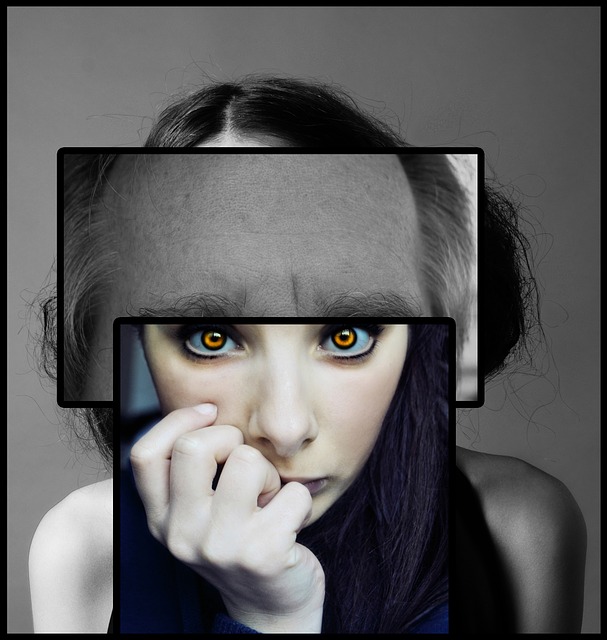You may have heard of dissociation. It describes how we feel when we are not quite all there. You might have experienced it while driving somewhere, then on reflection not really remembering anything much of the journey. Where were you then, during that journey?
We can become dissociated when the different parts of our brain (the child, teen, and adult) don’t line up. For people with a lot of baggage in their systems, this can happen quite often. For example, some people, if the general experience they carry in their baggage is that people are not safe, find it very hard ever to settle into their social engagement system. Their different parts in their brains might therefore never be fully able to agree what to do.
The most extreme version of dissociation is when someone is so split by these different parts that they actually have different personalities. This was often referred to as multiple personality disorder, and more recently as dissociative identity disorder and is usually the result of severe childhood abuse. We might understand it as a defence against the huge pressure of trying to realign all these very stressed parts of the brain back to an awful reality.
Being in a different reality may also show up as psychosis, or paranoia. This could also be a defence against the overwhelming experience of trying to manage a horrifying reality in a dysregulated nervous system with a fragmented brain.
Personality
If someone can have many personalities as a defence against severe dysregulation, then how can you know which one is real? And if you can’t, how can you know if any personality is real? For instance, I speak a little Greek and people say I have a different personality in that language. I kind of know what they mean.
Many interesting questions look very different once you understand the story of the nervous system. If you add to that a bit of basic knowledge about how the brain and how it connects to the body (neurobiology and anatomy), then we can start to look at many of life’s most baffling questions from a totally different perspective. The more complex the problem is, the harder it is to put forward a nice, tidy model of how to understand it from the nervous system perspective, but with a good grounding of the basics, we can look at most aspects of human behaviour in a totally different light.
Maybe you think that you’re quite normal and have a fixed personality that belongs to you. Maybe you identify that personality with the idea of you. This is who you are, isn’t it? But what if that personality was actually just a reaction to some unfinished biological processes in your body?
Take the issue of addiction, for example. In the old-school addiction treatment programmes, there was this core idea that if someone was an addict this was because they had a somehow deficient personality. They said they would never get better until they understood and accepted this. I see it differently.
To me, the addict is someone who’s trying to regulate their nervous system (either up, down, or both) by using something from the outside. The more you do this with substances and experiences, the less able you are to regulate your nervous system on your own, and so the more addicted you become. Add to this that most chemical experiences become less potent the more you do them, and you have an escalating problem.
Many addicts talk about hitting rock bottom before they could get any better. This is like reaching a point of surrender. They submit. Oddly, this is also the final response to threat in our threat response cycle. Animals use this state as a last resting place when all is lost. It actually halts the highly activated response in their bodies and puts everything into shutdown, which might be a huge relief for someone who is completely out of control on drugs. In addiction treatment, this is seen as a step forward; from there, recovery becomes possible.
Teenagers are another example. They often get a bad rap for their behaviour and then this is ascribed to their identity as an example of their woeful personality. In fact, teenagers are a very interesting stage of mammal. If you are smaller than adults, so given a choice between fight and flight and freeze, you will be unlikely to go for fight or flight. This leaves unfinished business in the system.
When the body gets bigger, to about the same size as an adult (like a teenager) this equation changes. Now you can successfully risk mobilising into fight or flight, and look how much energy you have stored up in your baggage to add into the equation. Teenagers are taking their first steps to trying to finish their unfinished business. The chaos that ensues has no boundaries or containment and is unlikely therefore to have a healthy outcome, but it’s not because of their personalities. It’s their biology.
Character
Almost everyone has a dysregulated nervous system, to some extent. As people grow up, go to school, university, become adults, they have to try to find some way to fit into the world so that they can get what they need in life. Sometimes even the basics, like food and shelter, are a struggle if they are very dysregulated and can’t collaborate at all with the world. Holding down a normal job and managing normal relationships can become a massively difficult task. Getting on with normal life gets very tricky indeed.
To deal with this twin difficulty of living in a dysregulated nervous system and trying to get our needs met in the real world, adults can adapt into different characters, each of which seems to have its own patterns of behaviour. These are sometimes called character strategies. It seems that we change who we are to fit in or to get what we want. There has been a tradition going back to Freud’s first followers which linked this development of character with perceived changes in the body, most recently formulated by Dr Pat Ogden as part of her Sensorimotor Psychotherapy.
These different character strategies deal with their own needs and the needs of others differently, and are explained by the challenges which they faced in childhood during attachment. This in turn is explainable by the workings of the nervous systems of their caregivers which they then inherited. So even though the result is these quite complex adult behavioural strategies, they link with the simple model we have developed of the origin of distress stored up in the body. It is perhaps therefore not too surprising that the way people carry their bodies has been linked with these different ways of presenting behaviour in different characters.
It is also an example of how a simple biological difference in evolution, such as my self-awareness of my response to threat, becomes a hugely complicated syndrome as it is played out by more and more people in more and more complex ways, settings and societies.
You can trace a single, causal line from the nervous system of self-aware humans becoming not-that-good at completing threat responses to the most complicated, baffling and peculiar personalities, character and behaviour of individuals today. It’s powerful stuff.
You can download this post in a handy 2-page PDF to print and share with friends, family, clients or colleagues. Follow this link to download now.
You can buy a copy of The Invisible Lion now on kindle or paperback from your local Amazon store. Just click here to buy now.


